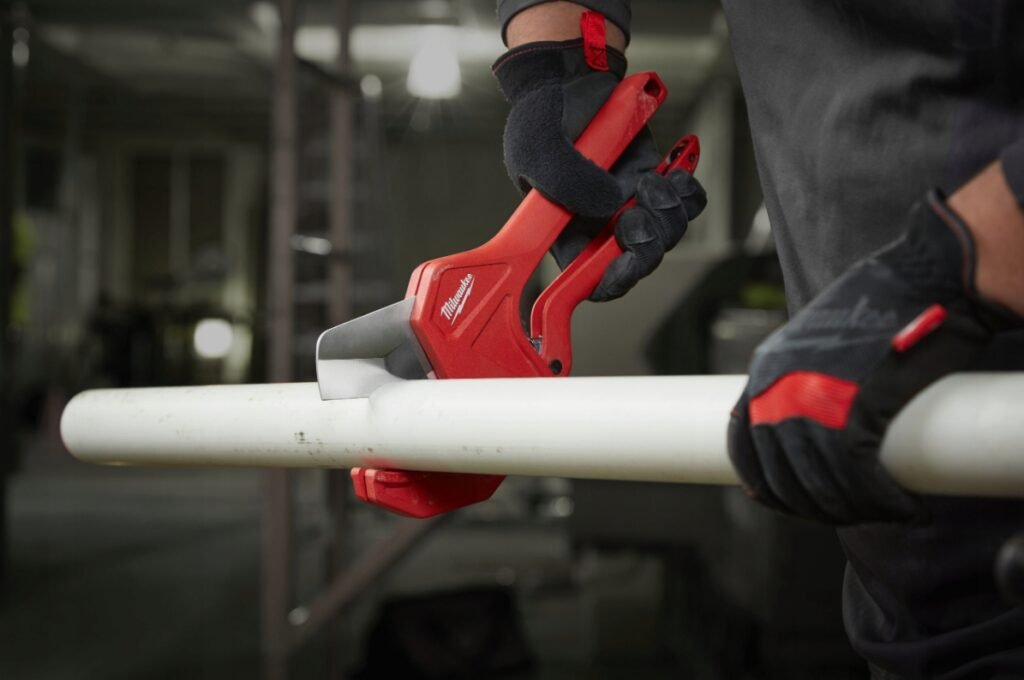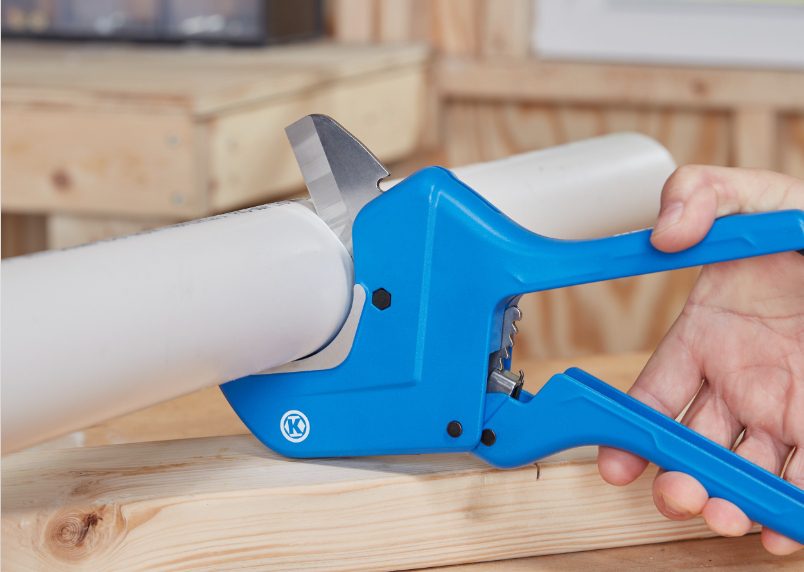Um guia passo a passo: como cortar conduítes de PVC
Como fazer um corte preciso dos eletrodutos de PVC é fundamental na instalação elétrica?
A precisão no corte de tubos elétricos é essencial na instalação de conduítes. Enquanto o corte malfeito de conduítes pode levar a encaixes inadequados ou até mesmo riscos à segurança. Aqui, nosso guia passo a passo visa equipá-lo com as habilidades e o conhecimento necessários para dominar a arte de cortar tubos de PVC. Seguindo os métodos de corte abaixo, você pode obter cortes precisos.
I. Ferramentas e materiais necessários
A. Lista de ferramentas essenciais:
1. Vários cortadores de tubos: escolha de acordo com o tamanho do conduíte e sua preferência.
2. Fita métrica: essencial para medir e marcar com precisão o conduíte antes do corte.
B. Recomendações de equipamentos de segurança:
1. Marcador: Usado para fazer marcas claras e visíveis em pontos de corte para cortes precisos.
2. Óculos de segurança: proteja seus olhos de detritos voadores e partículas geradas durante o corte.
3. Luvas: fornecem proteção às mãos e melhoram a aderência ao manusear ferramentas e materiais.
4. Máscara contra poeira: evita a inalação de poeira e detritos produzidos durante o corte de PVC
conduítes.
Além disso, também recomendamos o uso de proteção auricular e roupas de proteção para garantir um ambiente de trabalho seguro e confortável.
Certifique-se de ter todas as ferramentas e equipamentos de segurança necessários por perto. Esta preparação ajudará você a encarar o processo de corte de conduíte de PVC de forma segura e eficaz.
II. Guia passo a passo
Etapa 1: Meça e marque o conduíte
Comece determinando precisamente o comprimento do conduíte de PVC que você precisa usando uma fita métrica. Depois de fazer a medição, marque a linha de corte no tubo de plástico. Verifique suas medições para precisão, pois a exatidão neste ponto é vital para um corte bem-sucedido.
Etapa 2: Prenda o tubo
Para evitar qualquer movimento ou deslocamento durante o processo de corte, prenda ou segure o tubo firmemente no lugar. Isso garante estabilidade, facilitando a obtenção de um corte reto e limpo. Garantir que o conduíte esteja estável e imóvel resultará em um corte reto e preciso.
Etapa 3: Selecione a ferramenta de corte apropriada
Escolher a ferramenta de corte correta é vital para cortes limpos e precisos. Mais mencionado a seguir. Suponha que você não tenha ferramentas agora. Aqui estão dicas ou detalhes sobre como escolher a ferramenta de corte apropriada. Considere o tamanho e o tipo de conduíte com o qual você está trabalhando, bem como sua preferência pessoal e nível de experiência.
Cortador de tubos de PVC: Ideal para diâmetros menores, oferecendo cortes precisos e sem esforço. Serra de arco: Adequada para uma variedade de diâmetros, oferecendo flexibilidade e exigindo técnica de serragem cuidadosa.
Cortadores de PVC com catraca: Também ideal para tamanhos pequenos de conduítes. Mas a diferença é que ele oferece corte preciso com menos esforço manual.
Serra de esquadria elétrica: Adequado para todos os tamanhos, proporcionando cortes motorizados e precisos com as devidas precauções de segurança.
Você pode encontrar essas ferramentas mencionadas em lojas de ferragens. No entanto, é importante observar que os preços podem variar significativamente. Alguns podem ser mais caros, enquanto outros são mais acessíveis. Considerar a frequência de uso também é importante. Nesses casos, optar por uma opção mais econômica ainda pode fazer o trabalho de forma eficaz sem estourar o orçamento.
Sempre pondere suas necessidades em relação ao custo para tomar a melhor decisão para sua situação.
Etapa 4: Faça o corte
Com o conduíte firmemente no lugar e a ferramenta de corte selecionada, prossiga cortando ao longo da linha marcada.
Antes de escolher cortadores de tubos de PVC, é importante inspecionar a condição da lâmina para garantir que ela esteja afiada e em boas condições. Aplique pressão constante e gire o cortador suavemente ao redor do conduíte para obter resultados ideais.
Com uma serra, prenda o conduíte firmemente e mantenha a mão firme enquanto faz movimentos suaves e uniformes para cortar.
Ao usar cortadores de PVC com catraca, engate o mecanismo de catraca firmemente e alinhe a lâmina com o ponto de corte marcado. Utilize o mínimo de esforço manual, pois o mecanismo fornece alavanca para um corte mais fácil. Com uma serra de esquadria elétrica, fixe firmemente o conduíte e ajuste o ângulo e a profundidade da lâmina de acordo. Guie cuidadosamente o conduíte pela lâmina, certificando-se de
siga as precauções de segurança.
Etapa 5: Suavize as bordas
Após o corte, é crucial alisar quaisquer bordas ásperas ou rebarbas no conduíte. Você pode fazer isso usando uma ferramenta de rebarbação ou lixa para garantir um acabamento limpo e profissional. Remover quaisquer imperfeições melhorará a aparência do corte. E faça um encaixe adequado durante a instalação.
III. Dicas para cortar conduítes de PVC
Aqui estão algumas dicas essenciais para garantir um processo de corte de tubos bem-sucedido e seguro:
A. Manter a precisão por meio de medições precisas
Antes de fazer qualquer corte, reserve um tempo para medir e marcar o conduíte com precisão. Use uma fita métrica e um marcador para marcar os pontos de corte, garantindo que estejam claros e visíveis.
B. Dicas para escolher o cortador de tubos certo (mencionado acima)
Vamos recapitular os principais pontos abordados em nosso guia:
Antes de mergulhar no processo de corte, é crucial reunir as ferramentas e materiais necessários. Isso inclui ferramentas essenciais, como cortadores de tubos de PVC ou outras ferramentas mencionadas acima, luvas, máscaras contra poeira e assim por diante. Tudo isso garante um ambiente de trabalho eficaz e seguro.
O guia passo a passo divide os métodos de corte em cinco etapas fáceis de seguir.
Começando com a medição e marcação do conduíte, você passará para a fixação do conduíte no lugar. Com o conduíte posicionado com segurança, você cortará usando técnicas precisas, garantindo um resultado limpo e preciso. Por fim, alisar as bordas do conduíte fornecerá um acabamento profissional e facilitará a instalação adequada.
Um guia passo a passo: como cortar conduítes de PVC Ler mais »


